Open-plan kitchen ideas – spacious designs for the heart of your home
These beautiful open-plan kitchen ideas offer inspiration and tips on how to achieve this practical design in your home

An open kitchen-dining-living space offers great versatility for the way we live today. But coming up with practical open-plan kitchen ideas isn't always easy.
It takes skill to design a space that integrates easily with the living area, especially in apartments and smaller homes. Clever zoning, sound control and a cohesive decorating approach are all key factors.
Open-plan living has become part of our everyday lives. From a home office within a living room to spacious kitchen layouts that double as a dining room, these spaces should be well-designed and able to utilise the best of the overall room in their function.
Clever decorating and styling will keep each area looking separate but seamless. Sound complicated? Well, fear not, as we have compiled our favourite kitchen ideas for making the most of your open-plan space.
Open-plan kitchen ideas
1. Create a chill-out zone

Clever placement of furniture is an easy way of breaking up a big area. Using corner seating or modular units to create a cosy snug area within a larger space is a great room divider idea, as the back of the sofa breaks up the two areas.
A change of flooring will help create a visual break, too. So bring in a large rug to act as an anchor point in a seating area.
2. Enjoy quiet time
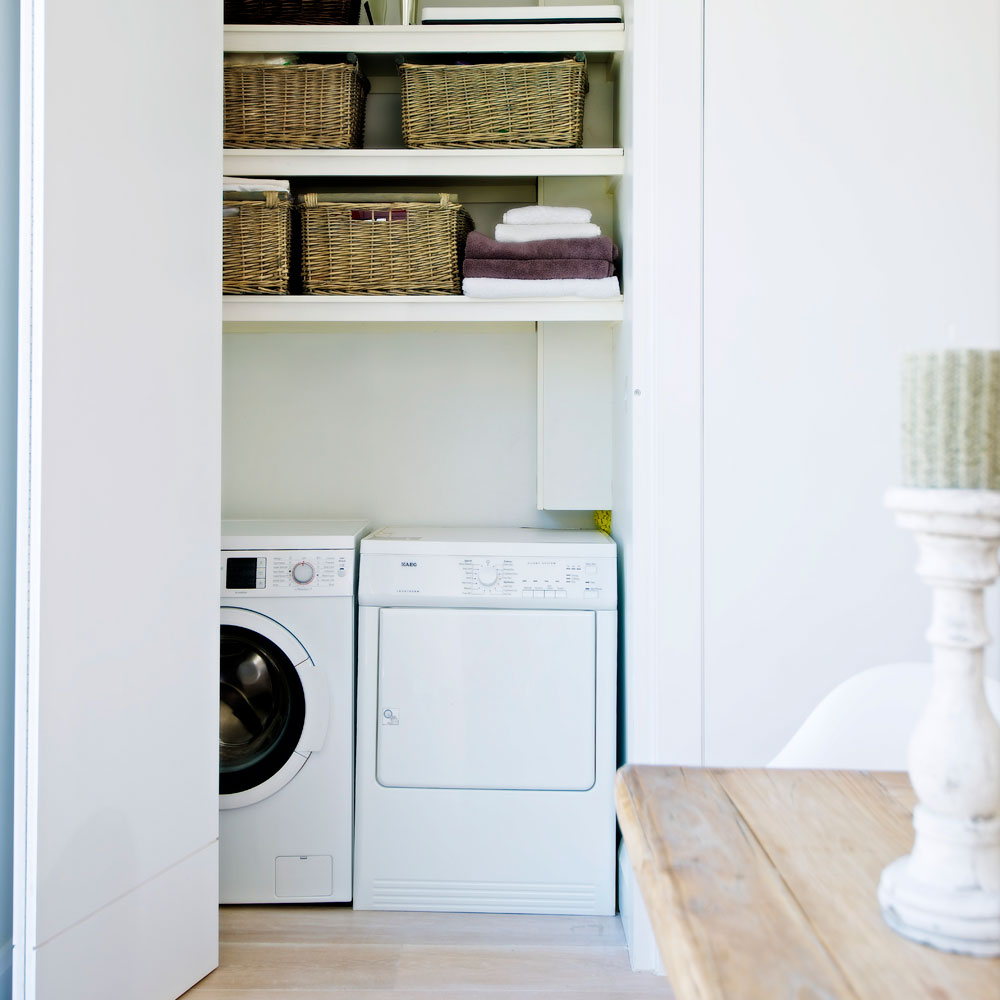
Carefully considering kitchen appliance layouts is important, as no-one wants to be shouting over the hum of a spin cycle. In open-plan kitchens opt for low-noise appliances when it comes to choosing a washing machine, dishwasher or extractor fan. Or if space allows, tuck in a separate small utility room or purpose-built cupboard so appliances are away and out of sight.
Get the Ideal Home Newsletter
Sign up to our newsletter for style and decor inspiration, house makeovers, project advice and more.
'Also look for quiet appliances,' says Ideal Home's Amy Cutmore. 'The way washing machines are designed today, with space-age insulation and inverter motors, means they no longer sound like a jet plane taking off in your kitchen. That said, some are quieter than others. A maximum spin noise level of around 70dB will insure peace in your open-plan set up.'
3. Section off an area

Noise can be an issue if there are lots of family members sharing the same space at the same time. A separate area, such as a snug or TV room, is a good idea and can be shut off when quiet time is needed.
Glazed walls, sliding panels or slatted screens offer greater flexibility so spaces can be closed off or opened up as required.
4. Create break-away spaces
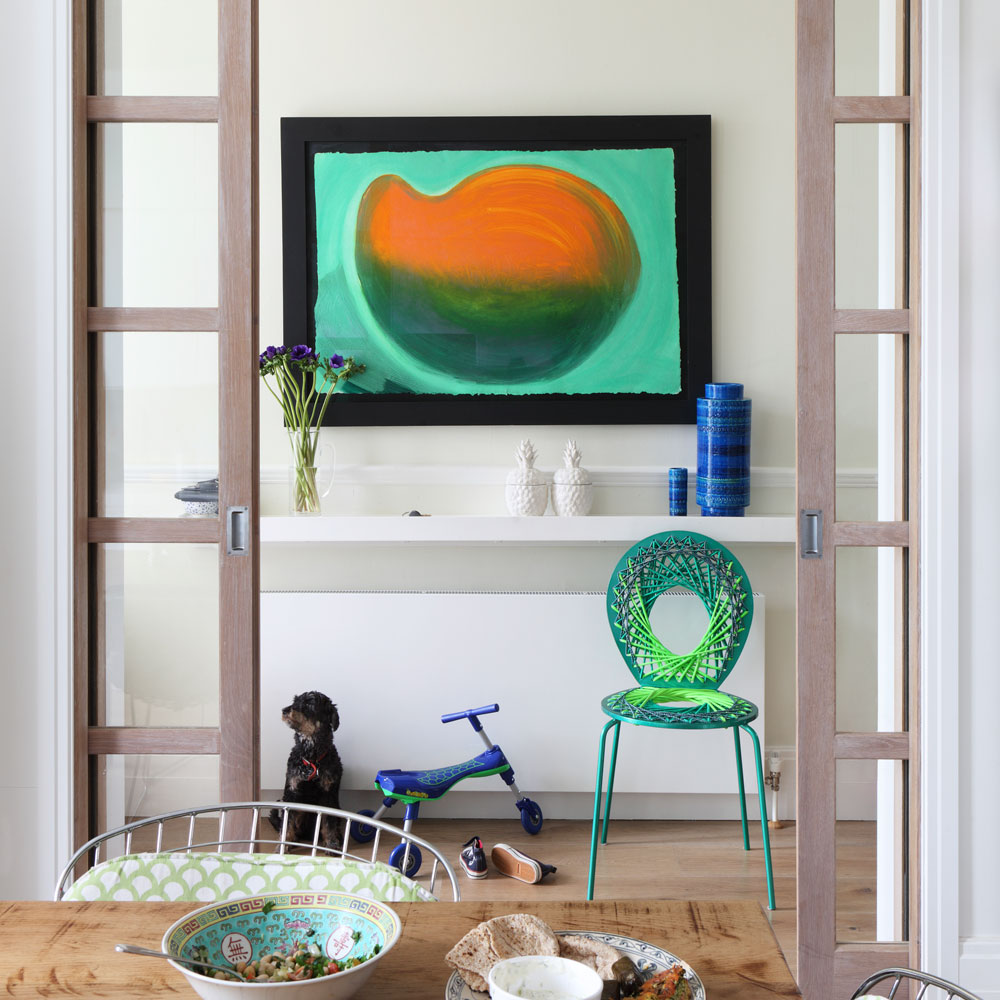
While open-plan spaces are great for family time, it can be a challenge if you want to escape for some peace and quiet. ‘Open-plan looks great in magazines and TV shows, but you are all in one space, with noise, cooking smells and everything else going on,’ says property expert Kunle Barker.
‘The key is to design a space that has the ability to be transformed into different areas by some kind of barrier, such as sliding pocket doors or barn doors.’
5. Arrange furniture strategically
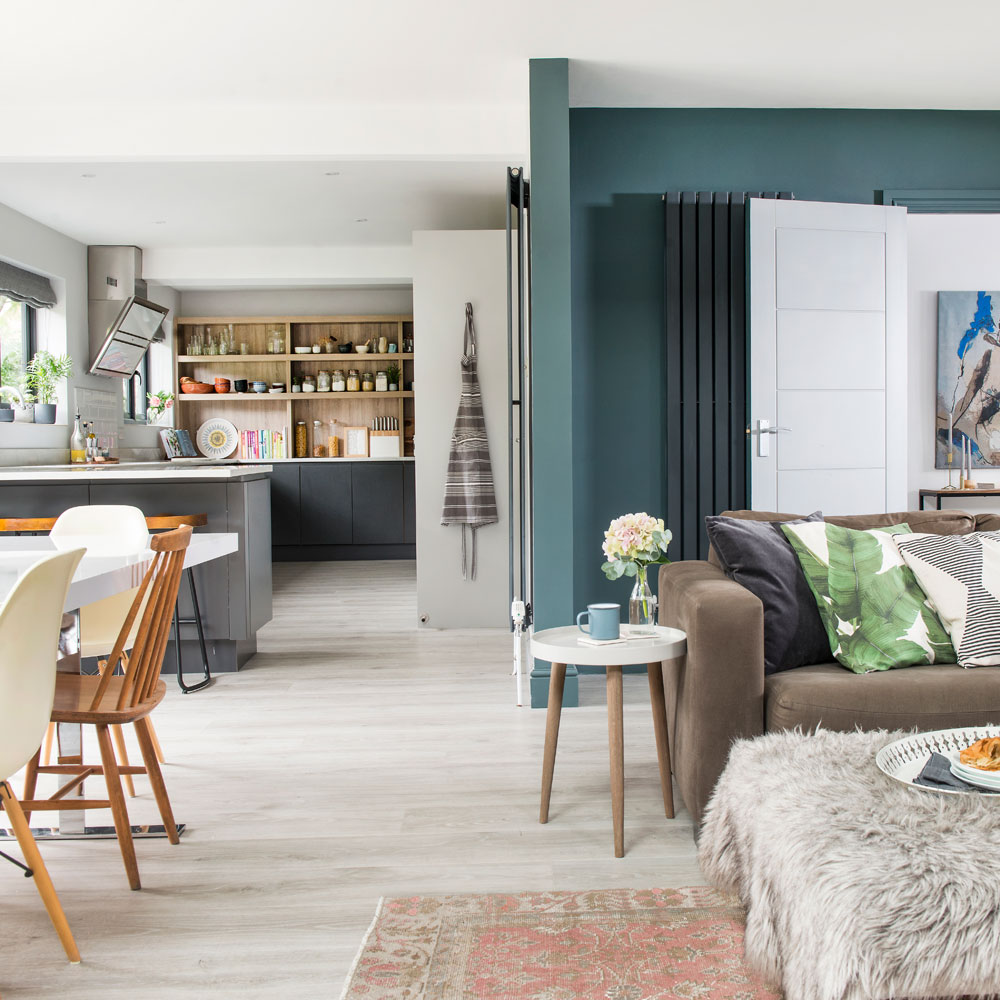
‘We love open-plan for the sense of space,’ says property expert Kunle Barker, ‘but when you lose a wall, you technically lose space to put things on or against.
'You end up with the interior walls fighting for bookshelves, TVs, sofas and radiators. So breaking things up, moving furniture away from the walls and using it to divide the space helps to settle things down.’
6. Choose co-ordinating colours
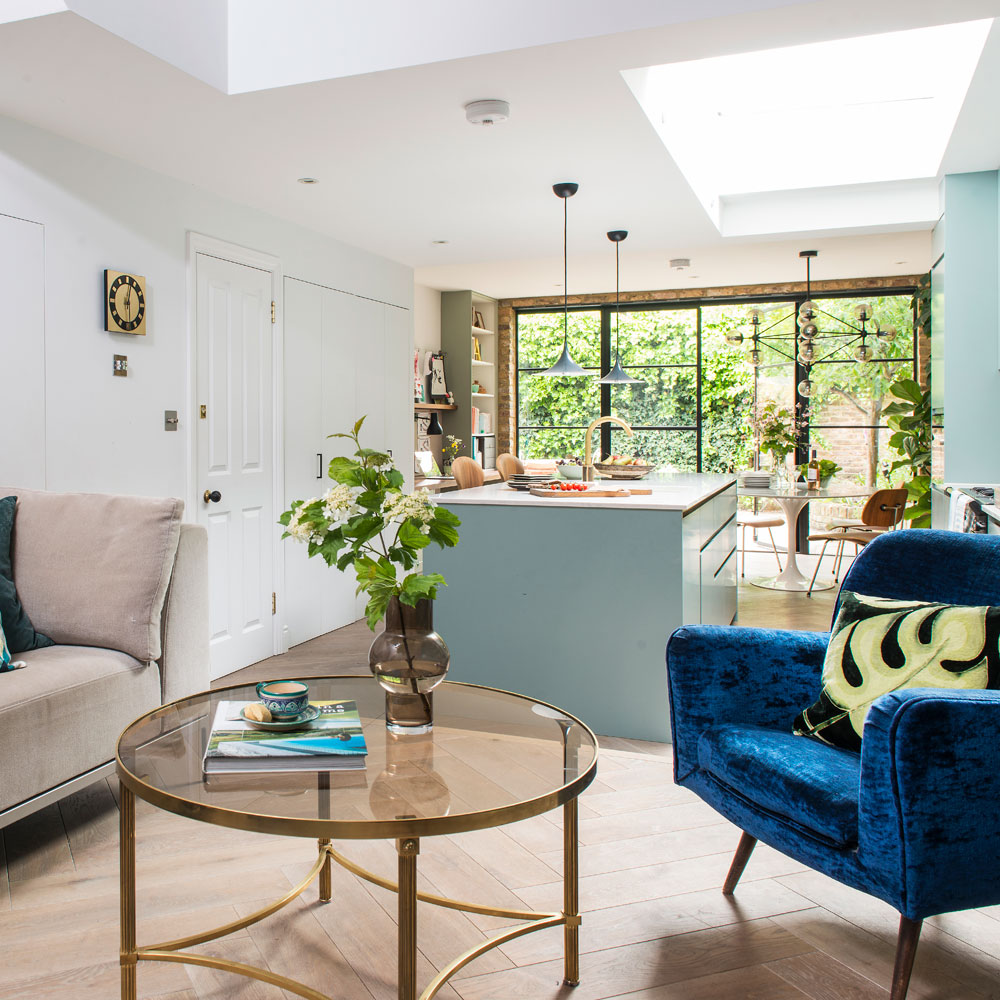
Give open-plan spaces a sense of flow and unity by keeping to a similar colour palette throughout. Create ‘break out’ areas with a painted panel, feature wallpaper idea or statement rug, but use a colour or material that will link the areas.
‘I always try to repeat elements across an open-plan space to “sew” the interior together,’ says interior designer Clare Pascoe of Pascoe Interiors.
7. Use lighting to highlight different areas
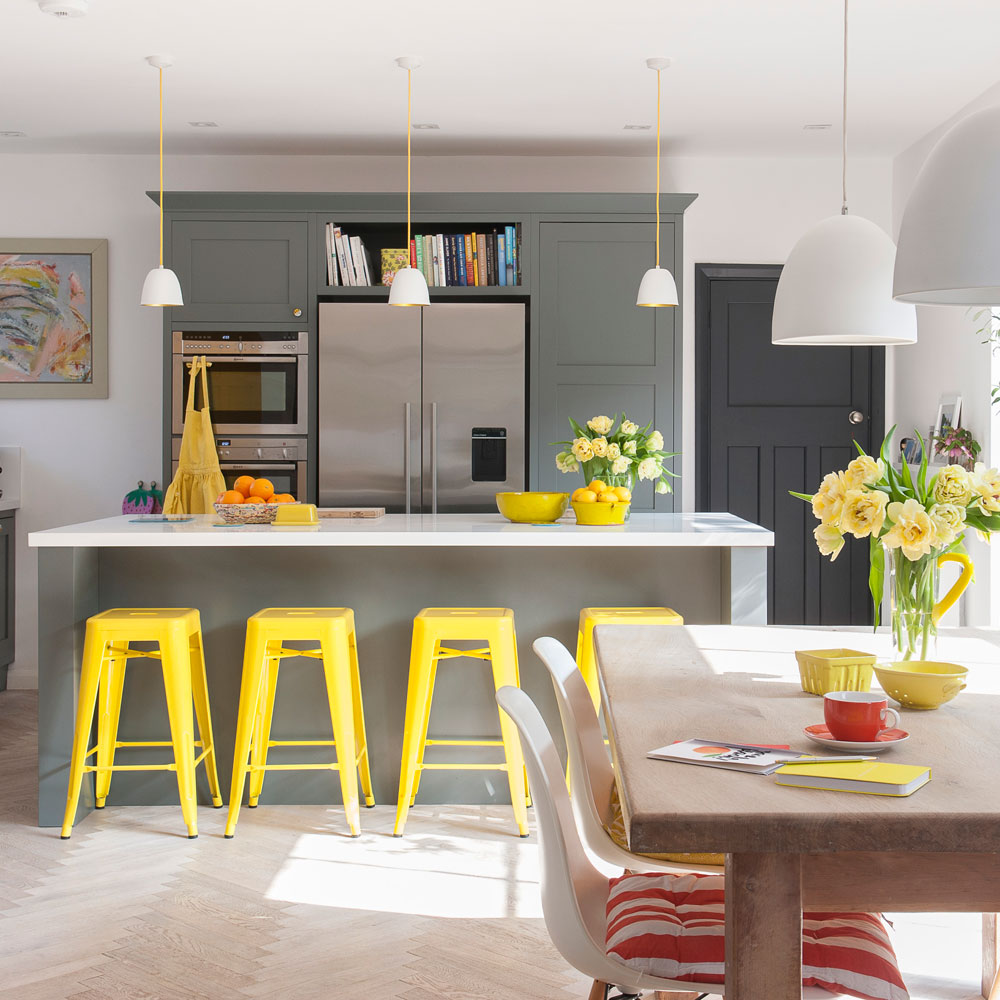
A good lighting scheme is key in an open-plan space and can help create different zones. Think a combination of kitchen lighting ideas for prep and entertaining, and perhaps a separate relaxation space with dimmable lighting.
‘Lighting needs to be flexible,’ says property expert Kunle Barker. ‘It’s not just about fitting 20 spotlights and that’s it. We talk of colour and dressing a room, but this can be massively affected by lighting. You need as many possibilities – spots, pendants, table lamps, floor lamps – so you can change the mood easily.’
8. Position a kitchen island in a prime spot
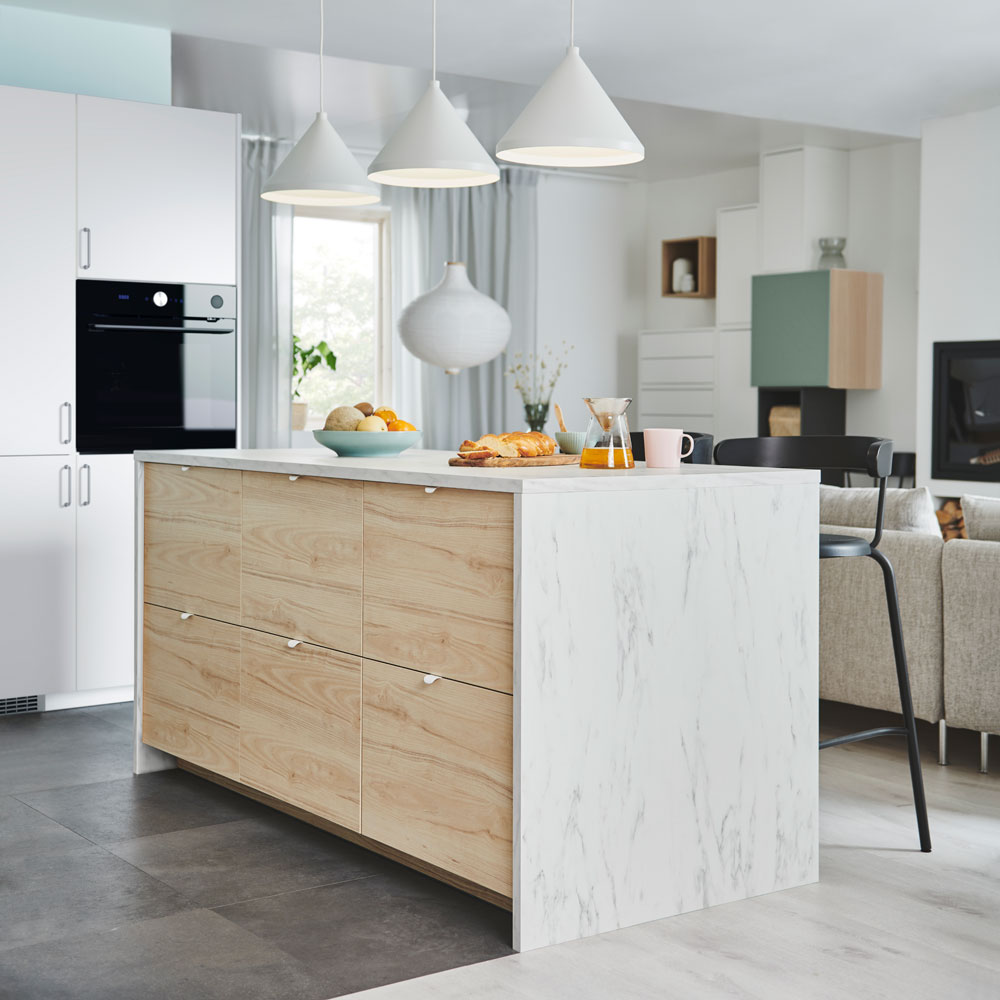
A freestanding kitchen island idea is a great way or breaking up a large space and creating a divide between different areas. Position an island so that it steers traffic away from kitchen hotspots, such as the hob and oven, and towards seating areas instead.
9. Create a room divider to calm a busy space
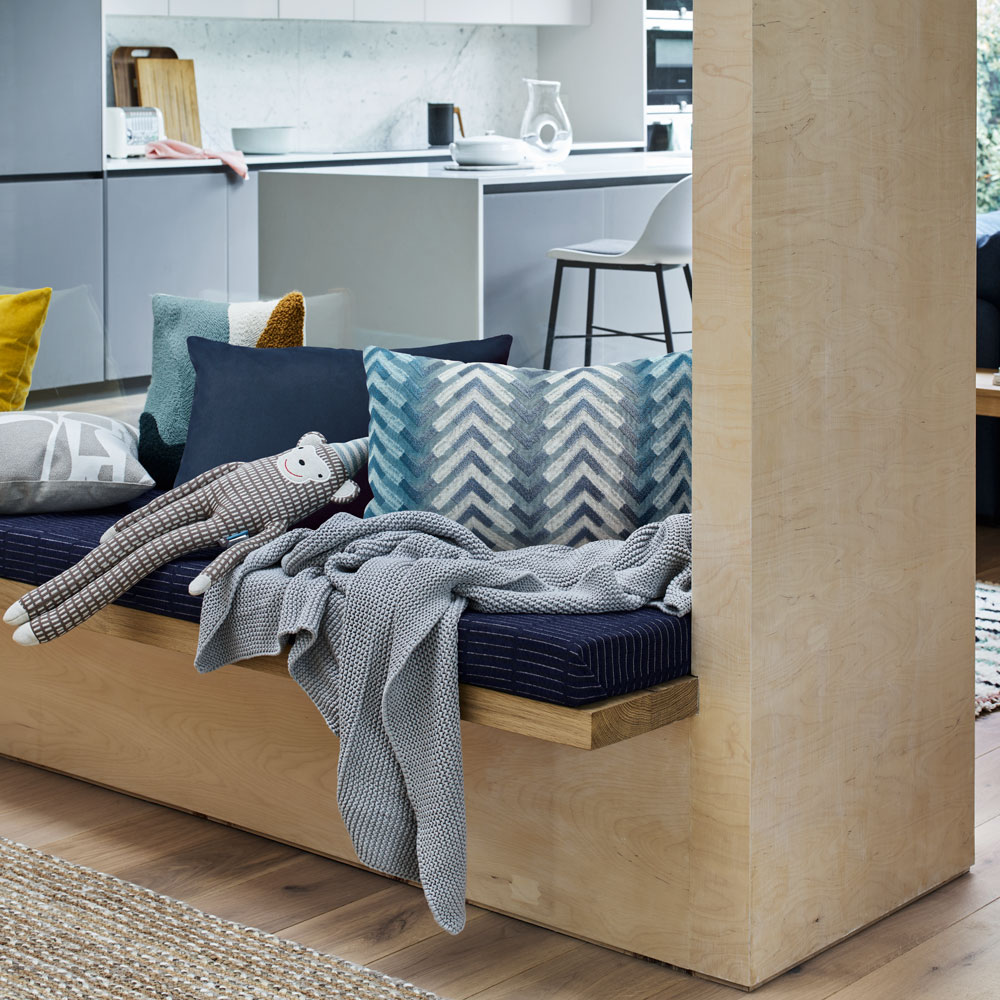
Open-plan kitchen layouts create more space, boost light levels and are great for family time. But with everyone sharing the same space they can sometimes feel a little chaotic.
Re-work an open-plan space by bringing in a room divider, whether it’s a purpose-built partition or a free-standing shelf unit, so you can create a subtle divide between two areas.
10. Tie an L-shaped space together with metallic flourishes
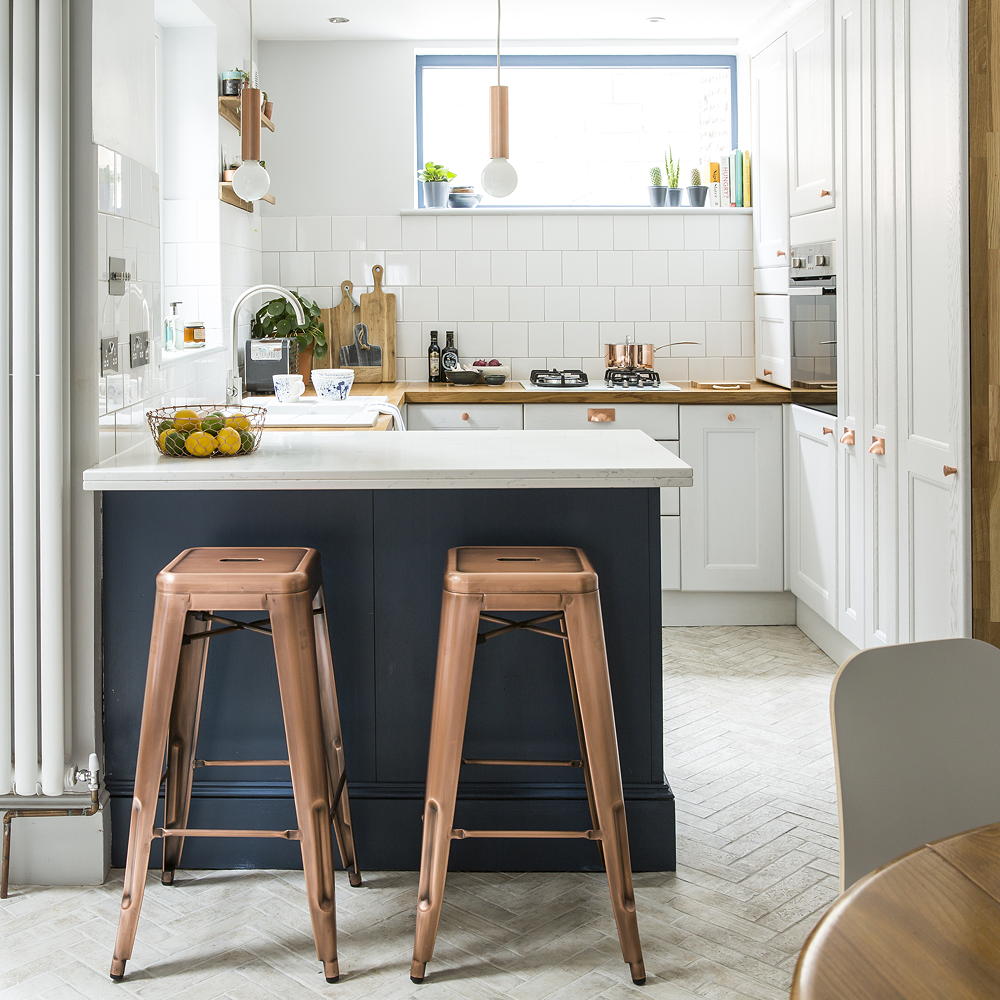
The owners had the reception room knocked through to the kitchen to create an open-plan, L-shaped kitchen. The layout has filled the space with light and offers lots more storage and worktop space. To make sure the kitchen doesn't feel stranded round the corner, add flourishes of colour to tie the two spaces together.
Here, the owners have used rose gold to pick out all the metal work in the space, including the light fittings and breakfast bar stools.
11. Define the space with different flooring
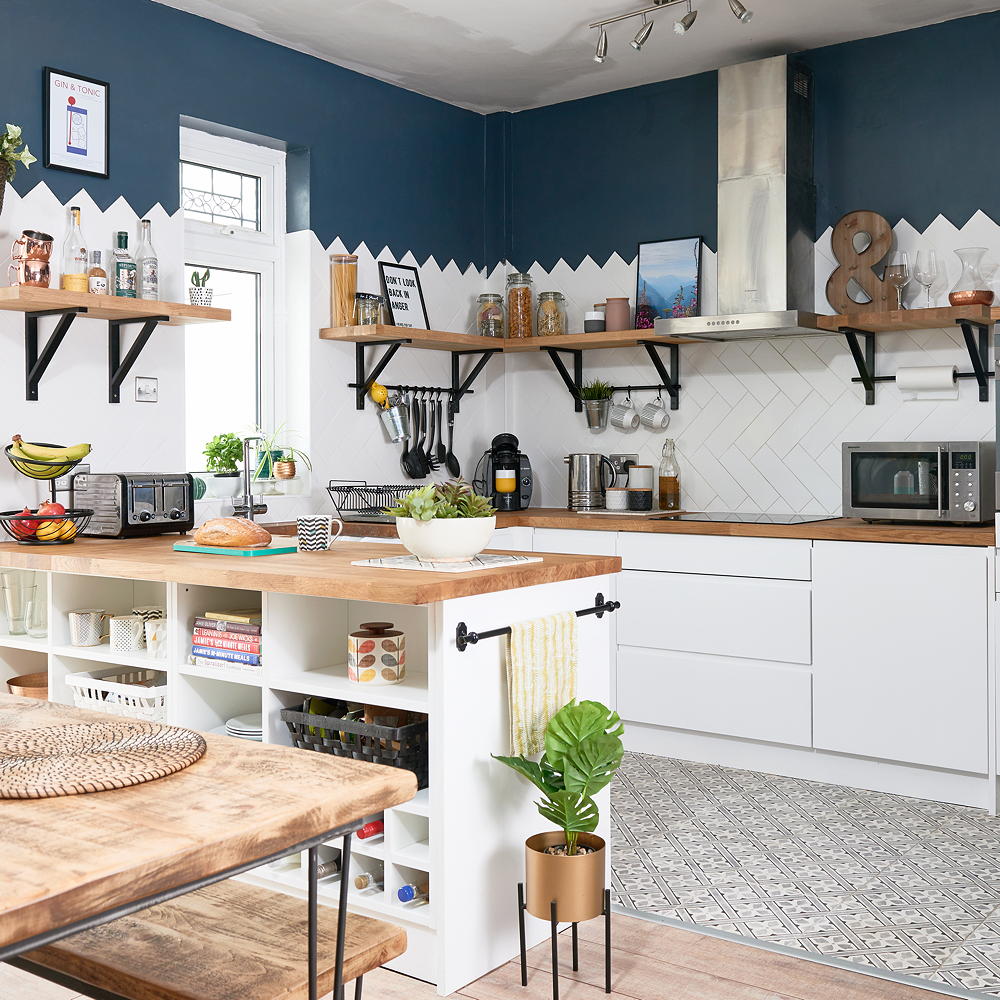
The flooring that is the most functional in the kitchen might not be the best fit for the eating space in an open-plan kitchen. Here, the two spaces have been kept distinct by opting for an easy-to-clean vinyl kitchen flooring idea, with rustic wood under the dining table.
But make sure the two flooring materials and patterns compliment each other. The pale patterned vinyl in the U-shaped kitchen contrasts beautifully with the neutral wood flooring in the dining area.
12. Make it functional and family-friendly
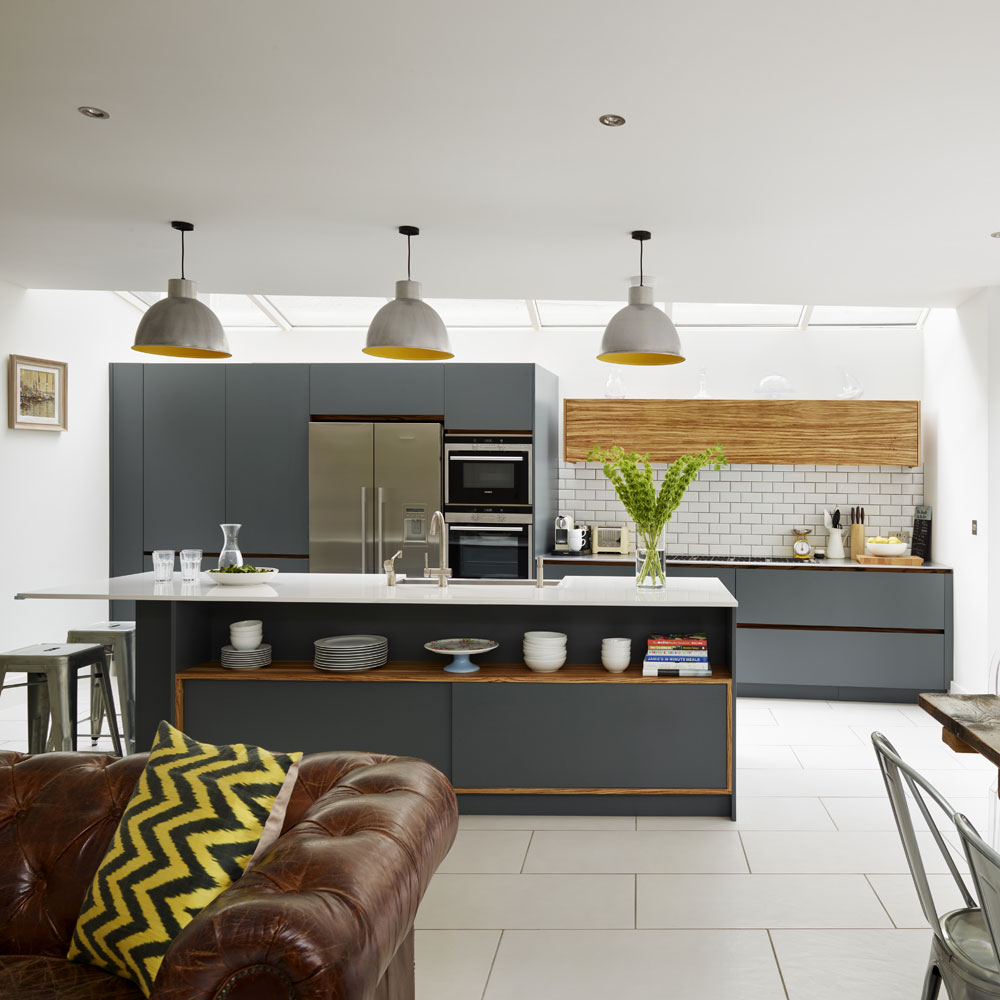
There are many advantages to having an open-plan kitchen. The most obvious is that you’ll be able to socialise more easily with family and friends while cooking. It also enables you to keep an eye on children during homework time or while they are playing in the garden.
This open-plan design incorporates dining, living and entertaining zones.
13. Think about your layout
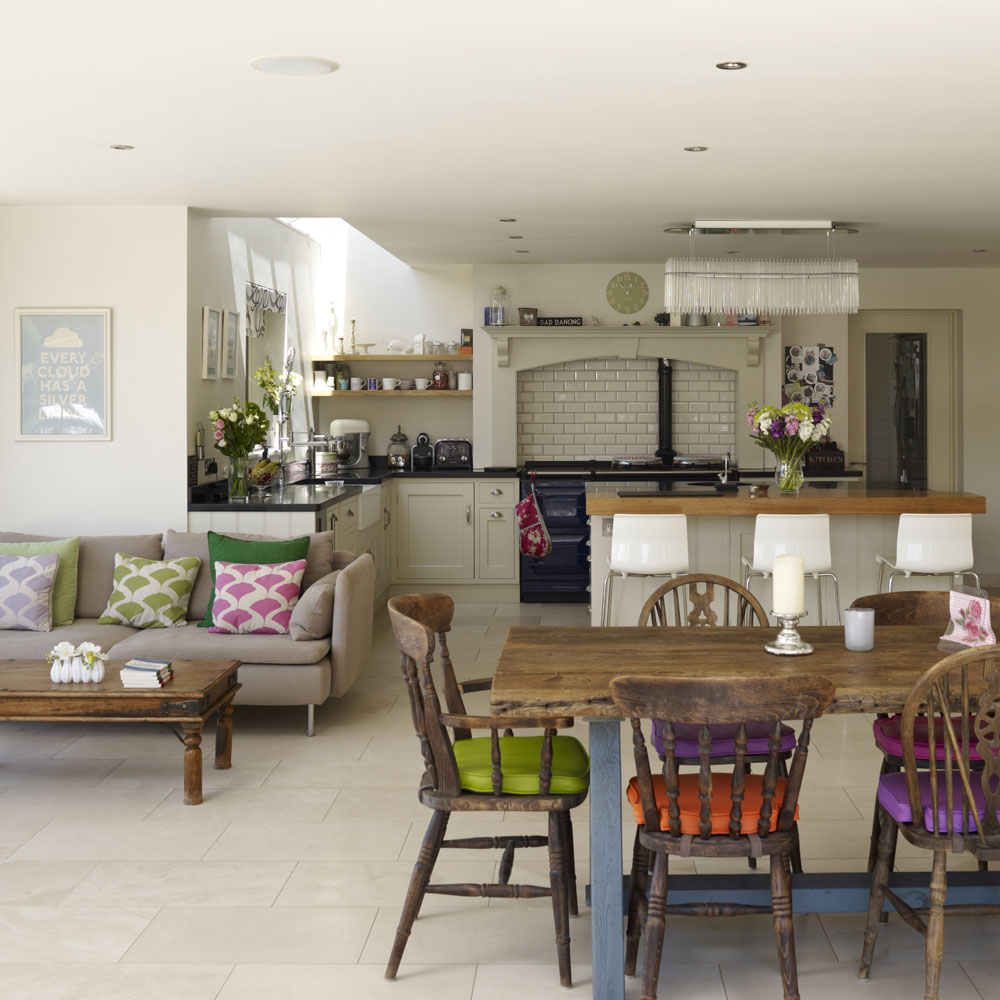
Think about where guests will sit while you cook and where you would like to eat. Short-stay seating, such as breakfast bars, need to be situated away from the work zone so no one gets in the way, but close enough so conversation flows easily.
Or take inspiration from shabby chic decorating ideas with a large, rustic farmhouse dining table, like this one accessorised with colourful pads.
Skylights running right along the highest point of the roof of this kitchen extension flood this open-plan kitchen and dining space with light. Hang artwork and fabulous pendant lights to lead the eye around the space – cream kitchen ideas like this one are the perfect backdrop for colourful accessories.
14. Join up the working triangle

With no walls to obstruct light or views, open-plan spaces usually have a great sense of flow. But large rooms demand just as much care in the planning as small spaces. The working part of the kitchen in particular needs to function ergonomically.
Where possible, adhere to the classic working triangle between sink, fridge and hob to cut down on footwork. Use an island to help shorten these distances where necessary.
15. Choose a simple colour palette
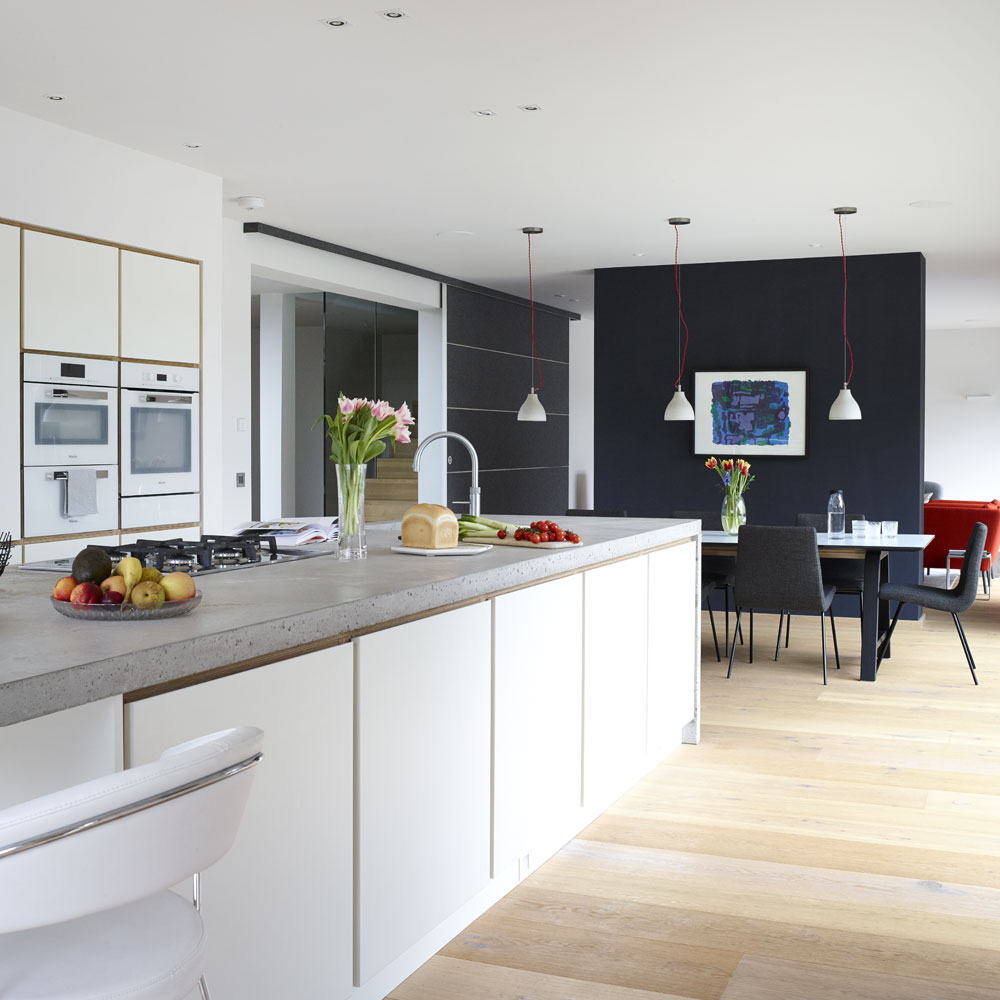
Hi-gloss units work perfectly in this modern open-plan, monochrome scheme. White kitchens are great in open-plan spaces, as you can then introduce brighter colours as a thread. Well, it's easier than trying to find units to match your sofa, or vice versa!
When it comes to style, built-in stainless-steel appliances have a professional look, while fully integrated models are concealed behind matching cabinet doors for a streamlined effect. Keep worktops clear and hide clutter away with clever storage solutions.
16. Opt for an industrial element
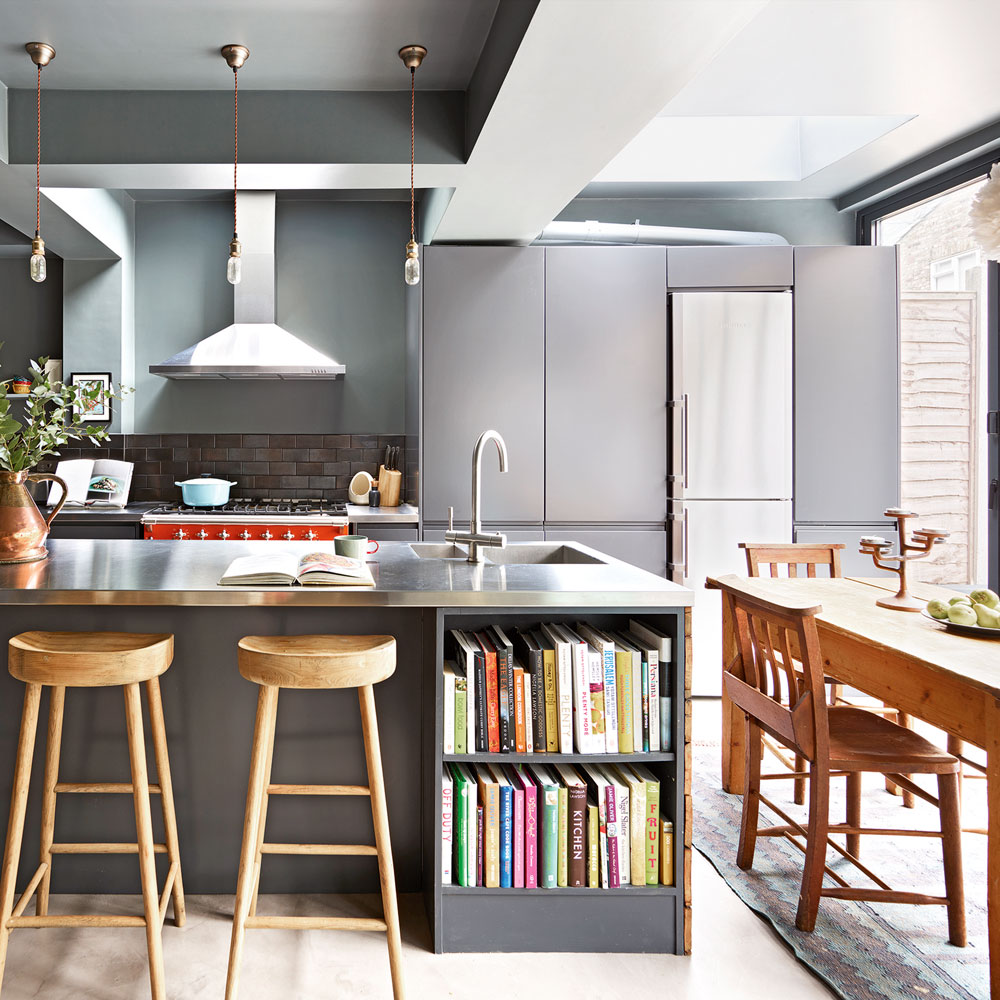
Modern warehouse spaces and loft apartments are ideal candidates for an open-plan kitchen. When thinking about how to plan a kitchen, follow the lead of existing finishes such as exposed-brick walls or vast utilitarian windows, choosing an oversized island in proportion to the space.
Blocky designs and work-like materials such as stainless steel can be softened with muted colours and touches of wood to create a sensitive design that can hold its own in the space and feel inviting.
17. Encourage a sociable lifestyle
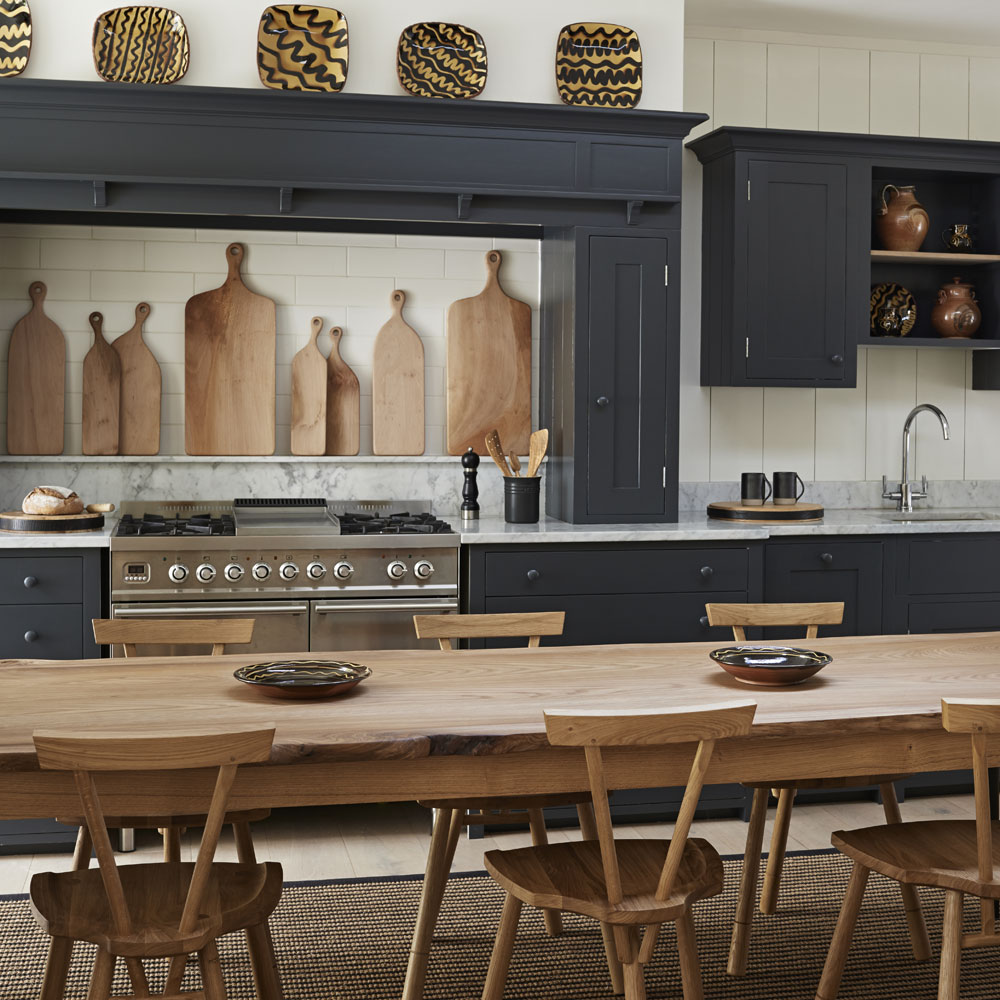
If you love to entertain, a kitchen-dining room is a practical solution, allowing you to be part of the action with your guests, not shut away in a cramped kitchen. Design your space accordingly. Here, super-sleek units conceal most of the working elements of the kitchen, providing a smart and uncluttered backdrop to a modern rustic dining area.
18. Incorporate colour
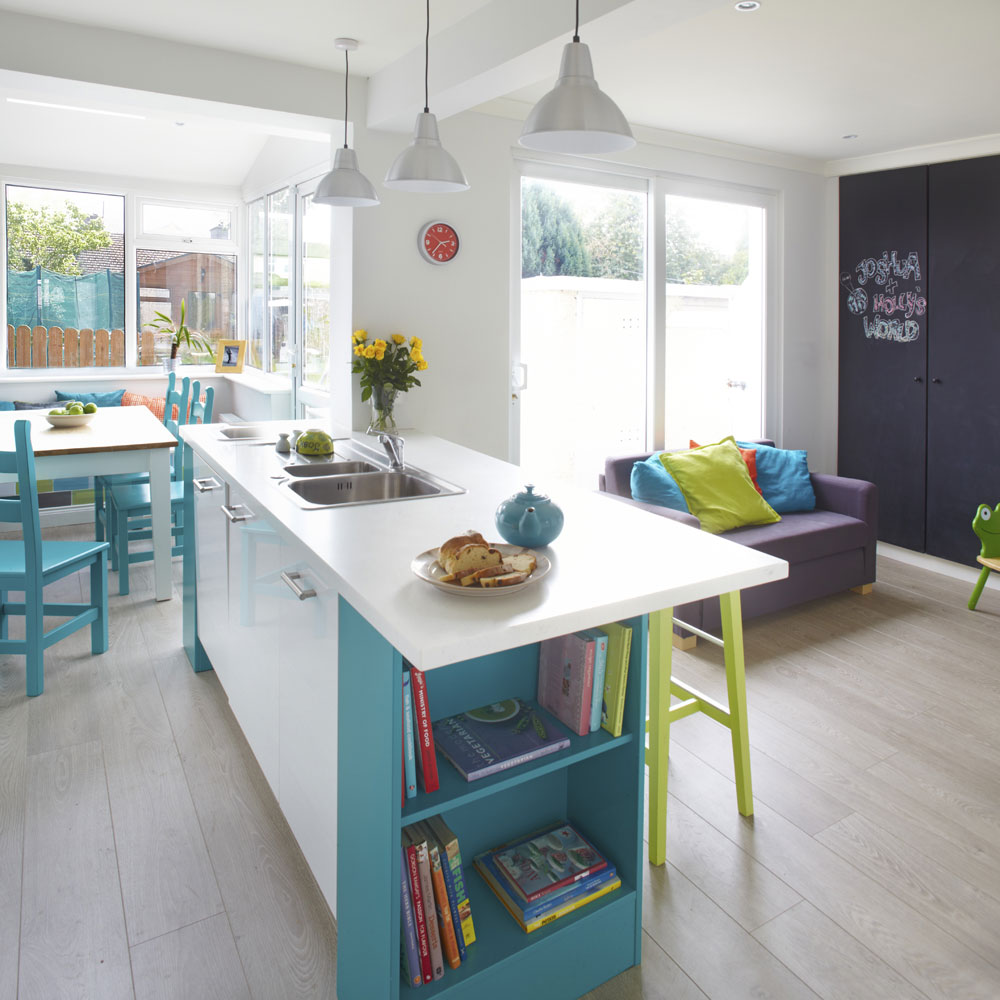
Open-plan kitchens look super-sleek and also offer an extremely practical way to live. As the space is used for a variety of tasks, from cooking and dining to relaxing, working and entertaining, it creates an all-inclusive environment that’s perfect for today’s modern family. Accent colours are used to define individual zones and pull the scheme together.
19. Keep it sweet and simple

Not all open-plan kitchens are huge, but even small spaces can shine. This small kitchen benefits from a neat layout with all mod cons close to hand.
Classic cabinetry painted in a dark shade is a sophisticated choice, especially when teamed with a beautiful wood floor. The parquet running throughout gives this room the air of a Parisian apartment, and shows that compact can indeed be beautiful.
20. Blow the budget
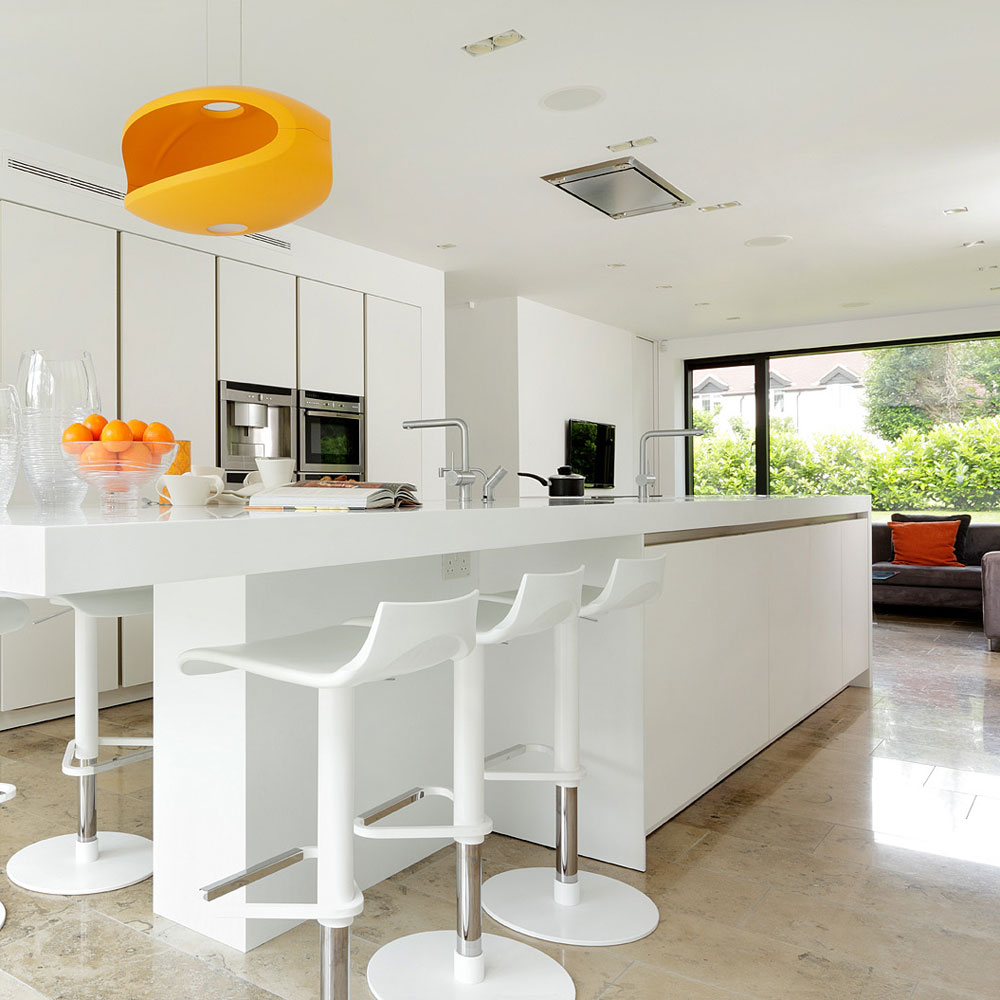
An important consideration in open-plan space is flow. Curves are great at subtly directing traffic, keeping children away from danger spots and stopping guests from getting under your feet.
The curved end of the Shaker-style unit also ensures there are no sharp corners to knock into. Heating a large space can also be costly. The best solution is to install underfloor heating for all-round ambient warmth.
21. Break down walls
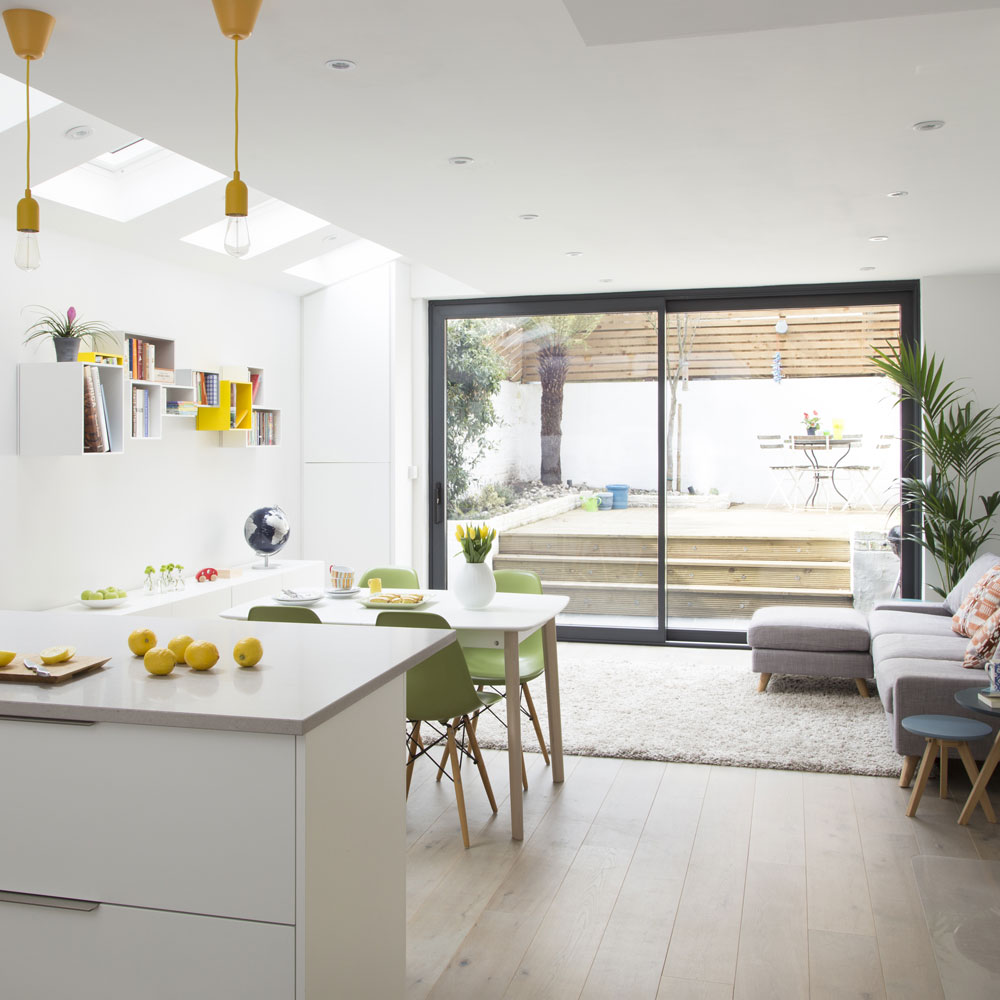
Knocking down walls to produce one larger, open-plan area is an ideal way to transform a cramped, dark room. Just think of all the extra light and space you could potentially gain. Use glass screens or sliding doors to separate the cooking area from the living space and consider bar stools for a relaxed eating area.
As with any structural changes to your home, always contact your local planning office. Certain changes will be allowed under permitted development but others will require planning permission.
22. Create curves
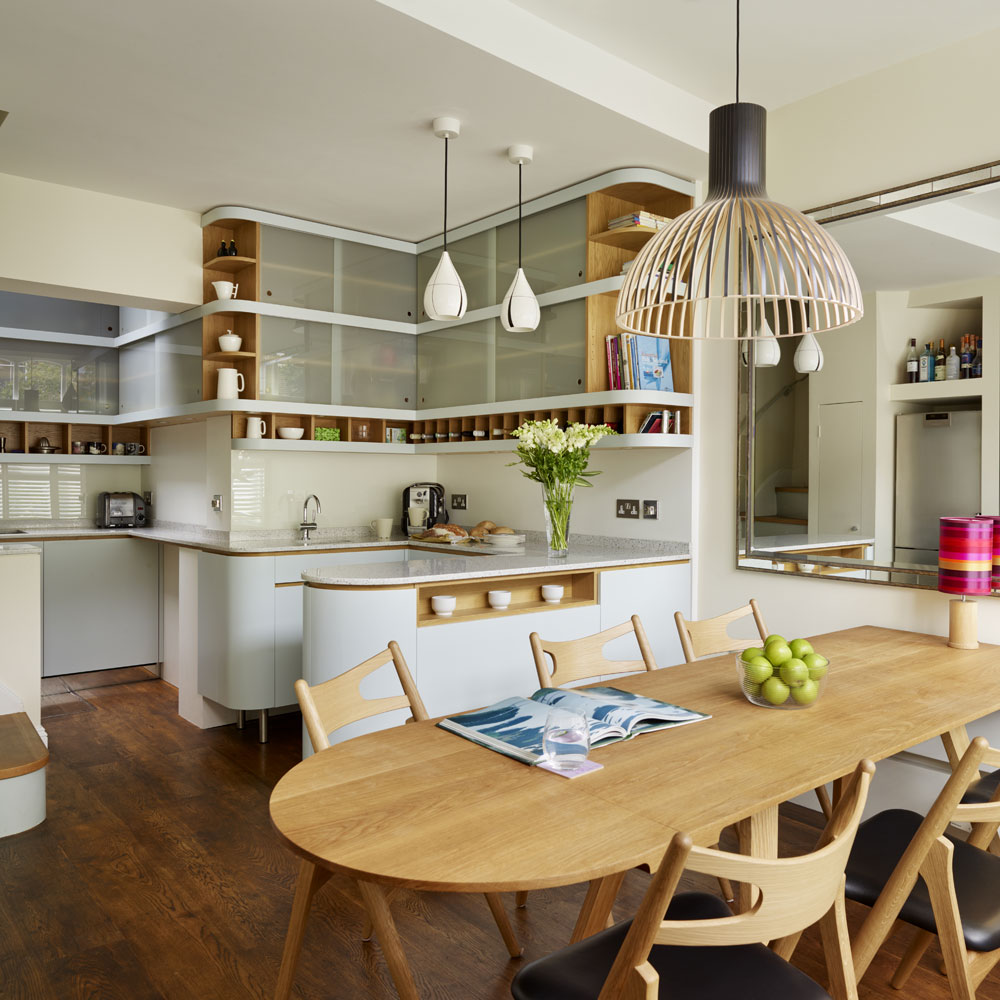
An important consideration in any open-plan kitchen idea is flow. Curves are great at subtly directing traffic, keeping children away from danger spots and stopping guests from getting under your feet.
The curved end of the Shaker-style unit also ensures there are no sharp corners to knock into. Heating a large space can also be costly. The best solution is to install underfloor heating for all-round ambient warmth.
Is an open-plan kitchen a good idea?
'Whether an open-plan kitchen is a good idea or not will depend on several factors,' says Ideal Home's Amy Cutmore.
'Making a room open plan can be costly, particularly if supporting walls need to be replaced with RSJs or an extension added to give you the right space.
'Open plan might also be the wrong choice if you are used to using your main living or dining space as a home office. Having people traipse through the kitchen to grab a snack while you're presenting in a key meeting is hardly convenient.'
'However, if you're looking to entertain, an open-plan space will give you more capacity and flexibility. Added to that, you can create a space that naturally leads out to the garden.'
'According to the Flexible Living Report 2020 by John Lewis & Partners, people with open-plan homes are increasingly looking to create zones to segregate work from play. So you may prefer a 'broken plan' layout, to a full open plan one.'
Additional words by Jennifer Morgan and Jennifer Ebert

Lisa is Deputy Editor of Style at Home magazine and regularly contributes to sister title Ideal Home. She has written about interiors for more than 25 years and about pretty much every area of the home, from shopping and decorating, crafts and DIY to real home transformations and kitchen and bathroom makeovers. Homes and interiors have always been a passion and she never tires of nosying around gorgeous homes, whether on TV, online, in print or in person.
-
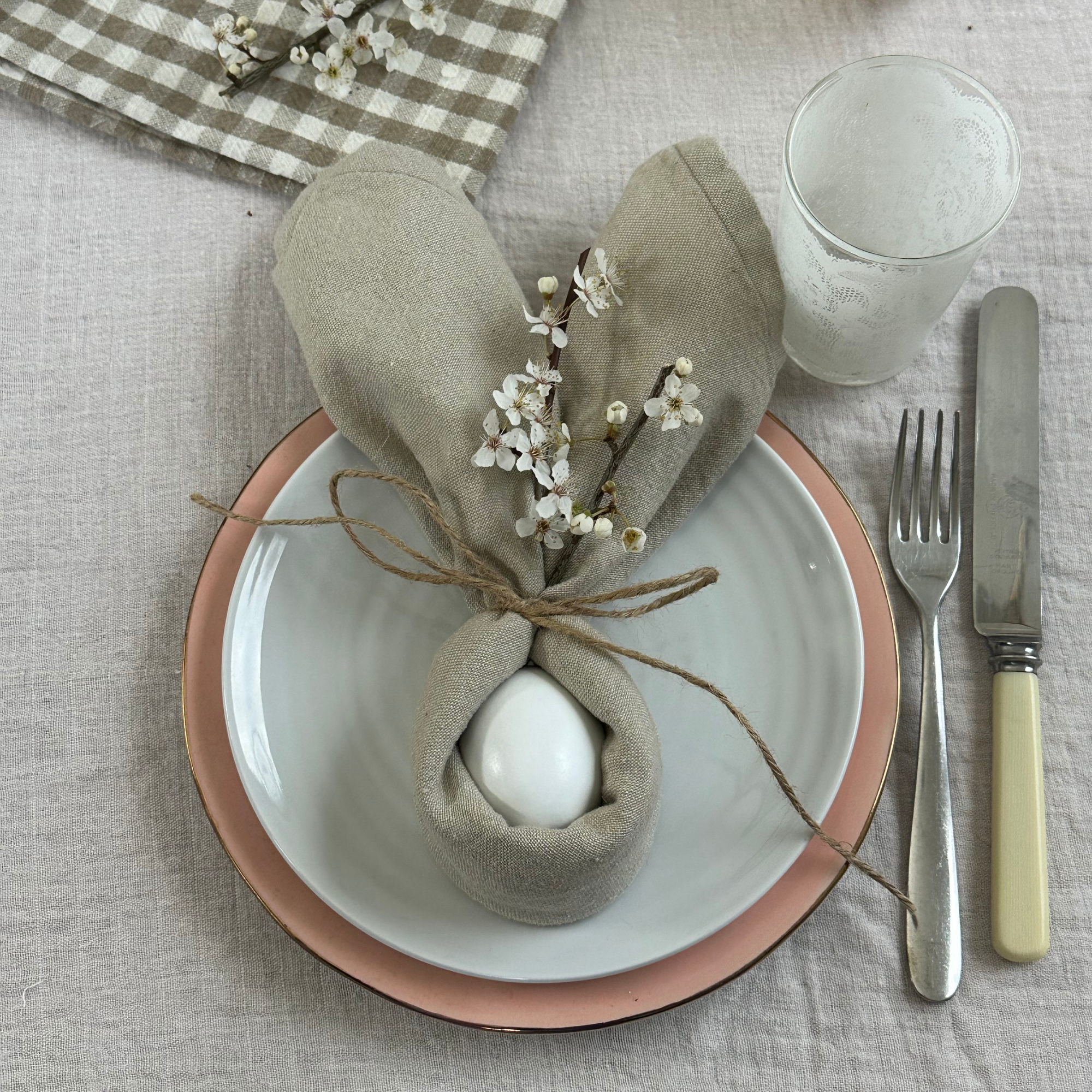 We tried the viral napkin bunny ears hack – it only takes five minutes and will take your Easter table to the next level
We tried the viral napkin bunny ears hack – it only takes five minutes and will take your Easter table to the next levelThis Easter craft is not only beautiful, but really easy to do
By Kezia Reynolds
-
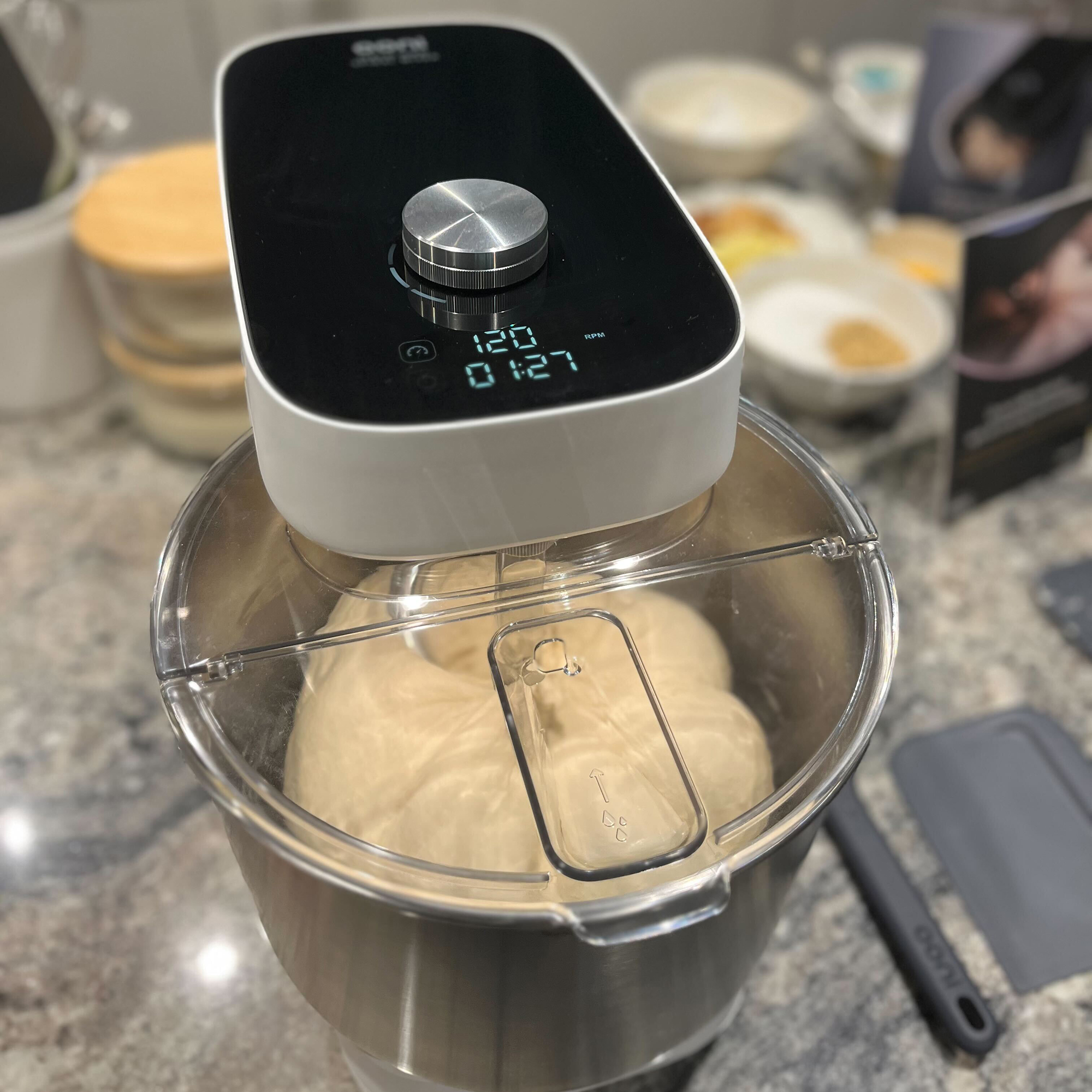 Ooni's new stand mixer is already a sell-out success
Ooni's new stand mixer is already a sell-out successHere's why the Ooni Halo Pro Spiral mixer is a big deal for at-home breadmakers
By Molly Cleary
-
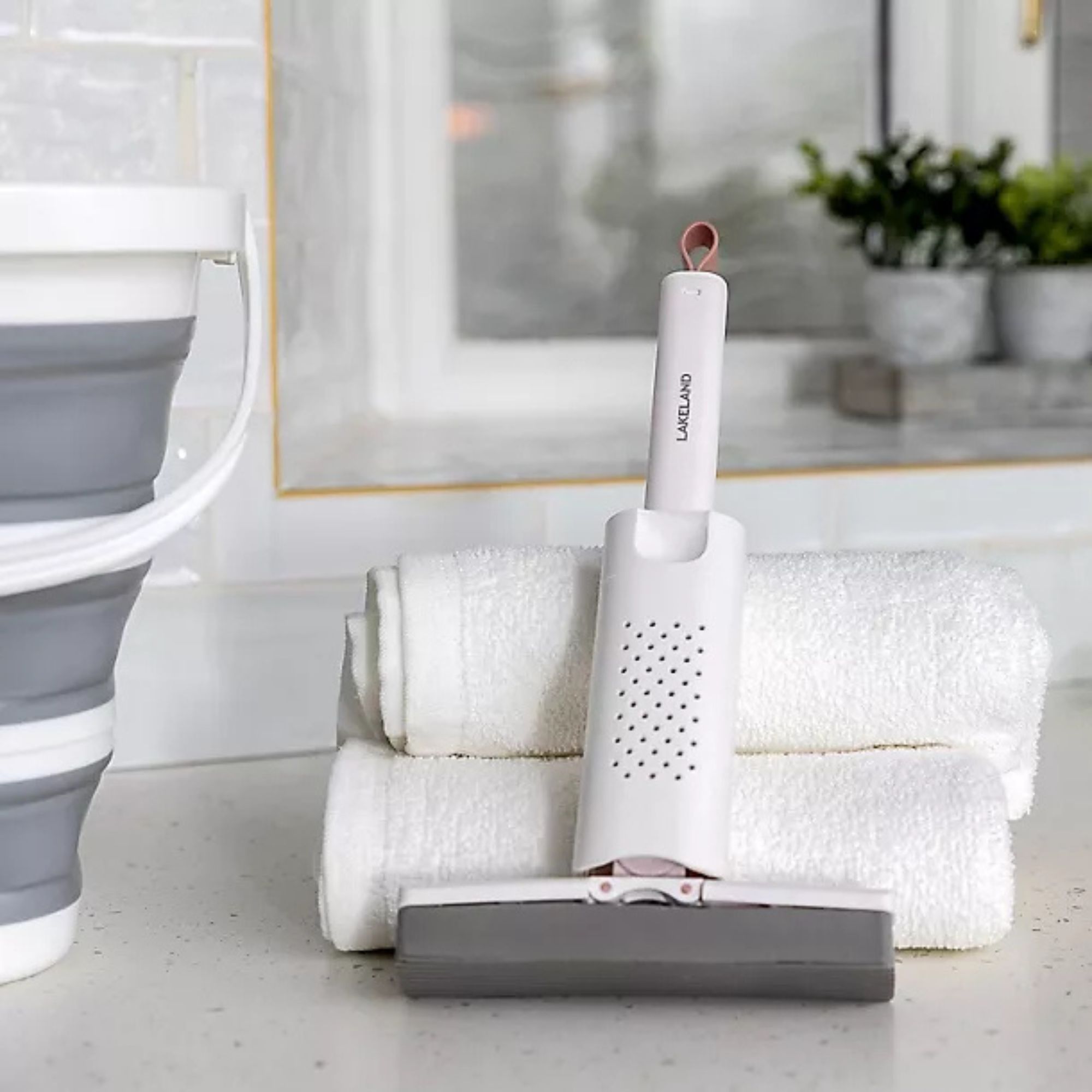 I’ve been using Lakeland’s new £5 mini mop as a shower squeegee, window cleaner and damp duster — it’s the ultimate multi-purpose cleaning tool
I’ve been using Lakeland’s new £5 mini mop as a shower squeegee, window cleaner and damp duster — it’s the ultimate multi-purpose cleaning toolYep, I've added this new mini cleaning tool to my collection
By Lauren Bradbury